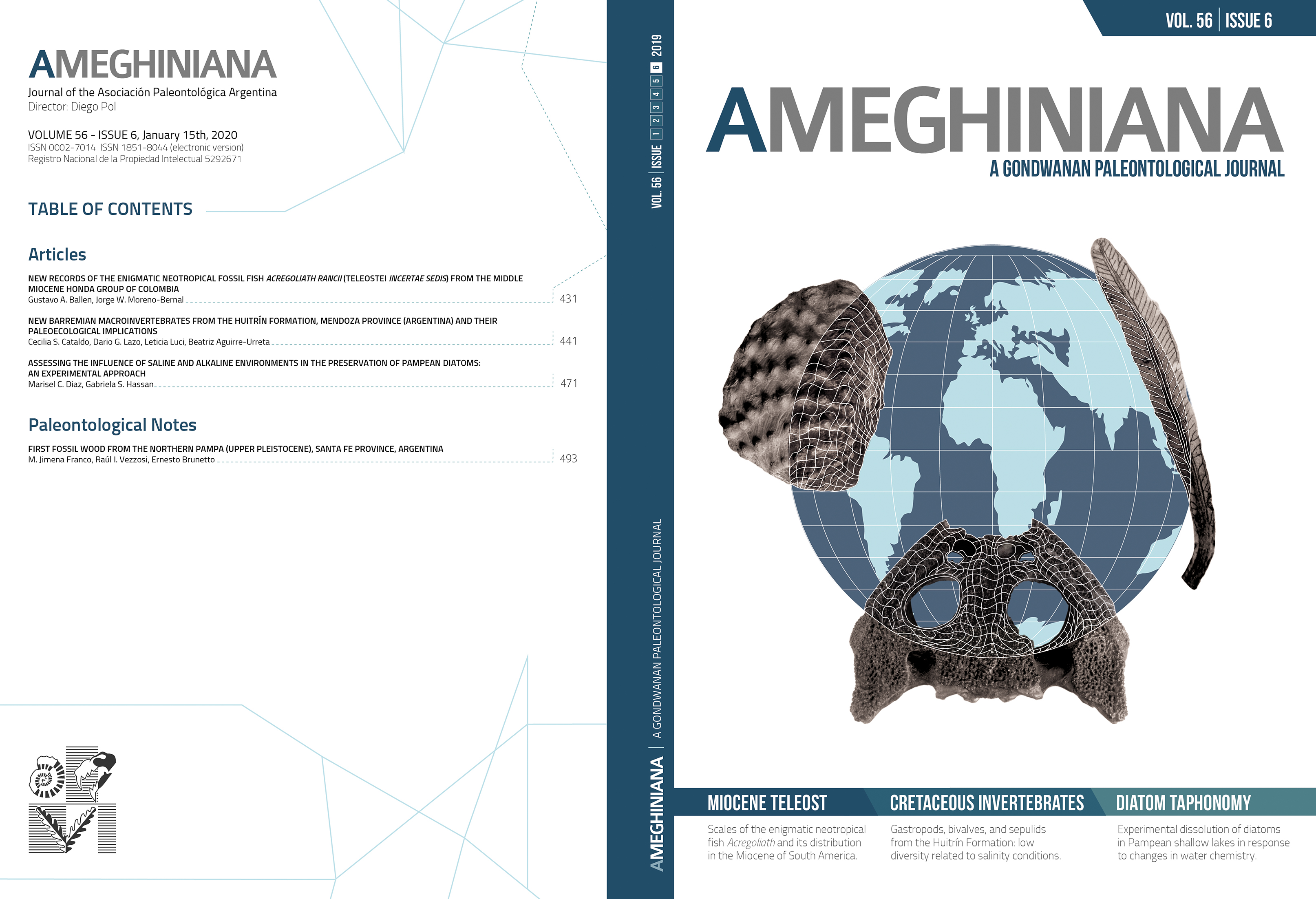ASSESSING THE INFLUENCE OF SALINE AND ALKALINE ENVIRONMENTS IN THE PRESERVATION OF PAMPEAN DIATOMS: AN EXPERIMENTAL APPROACH
DOI:
https://doi.org/10.5710/AMGH.06.09.2019.3275Keywords:
Taphonomy, Dissolution, Diatoms, Shallow Lakes, PaleoenvironmentsAbstract
Diatom dissolution is controlled by environmental conditions prevailing during fossilization. In Pampean shallow lakes, diatom dissolution showed important correlations with gradients of salinity, pH, carbonate, and bicarbonate, being these the most probable causes of the observed shifts in Holocene assemblages preservation. In the present contribution, a series of experiments were conducted in order to demonstrate the effect that physical-chemical lake characteristics exert on Pampean diatom assemblages preservation. Three experimental assemblages were subjected to the effect of three concentrations of two salts, NaCl (0.6, 1.2 and 3M) and NaHCo3 (0.6, 0.9, and 1.2M), and two pH values (7 and 10). Aliquots of the experimental solutions were removed once each five days for 20 days, and analyzed for changes in dissolved silica concentration (SiDi), relative and absolute abundances of diatoms, and dissolution indices (DDI) based on the target taxon Cyclotella meneghiniana. All the experimental solutions increased the SiDi significantly, particularly since day 10. These increased SiDi values were accompanied by significant changes in the DDI, which reached maximum values at pH 10, and by evidence of dissolution observed in SEM images, whereas no significant changes in relative or absolute abundances of diatoms were registered. These experimental results demonstrated the impact that water chemistry can exert on diatom dissolution in Pampean shallow lakes, even during short-term exposures. Given the naturally high pH, NaCl and NaHCo3 concentrations characteristic of many of these lakes, these experimental findings can be confidently extrapolated to the interpretation of the dissolution trends found in modern and fossil sedimentary assemblages.Published
Issue
Section
License
Authors publishing in Ameghiniana have the option of making their article freely available online. Authors opting for the Open Access must pay a fee of $300 (US dollars) to cover article-processing costs and to ensure the article is made open access. Please contact the Production Team after the acceptance of your manuscript if you are interested in making your article Open Access. This option implies by default a license Creative Commons Attribution Non-Commercial-NoDerivs License (CC BY NC ND). If your funding institution requires a different licensing option please communicate this to the Production Team after the acceptance of your manusctipt.











